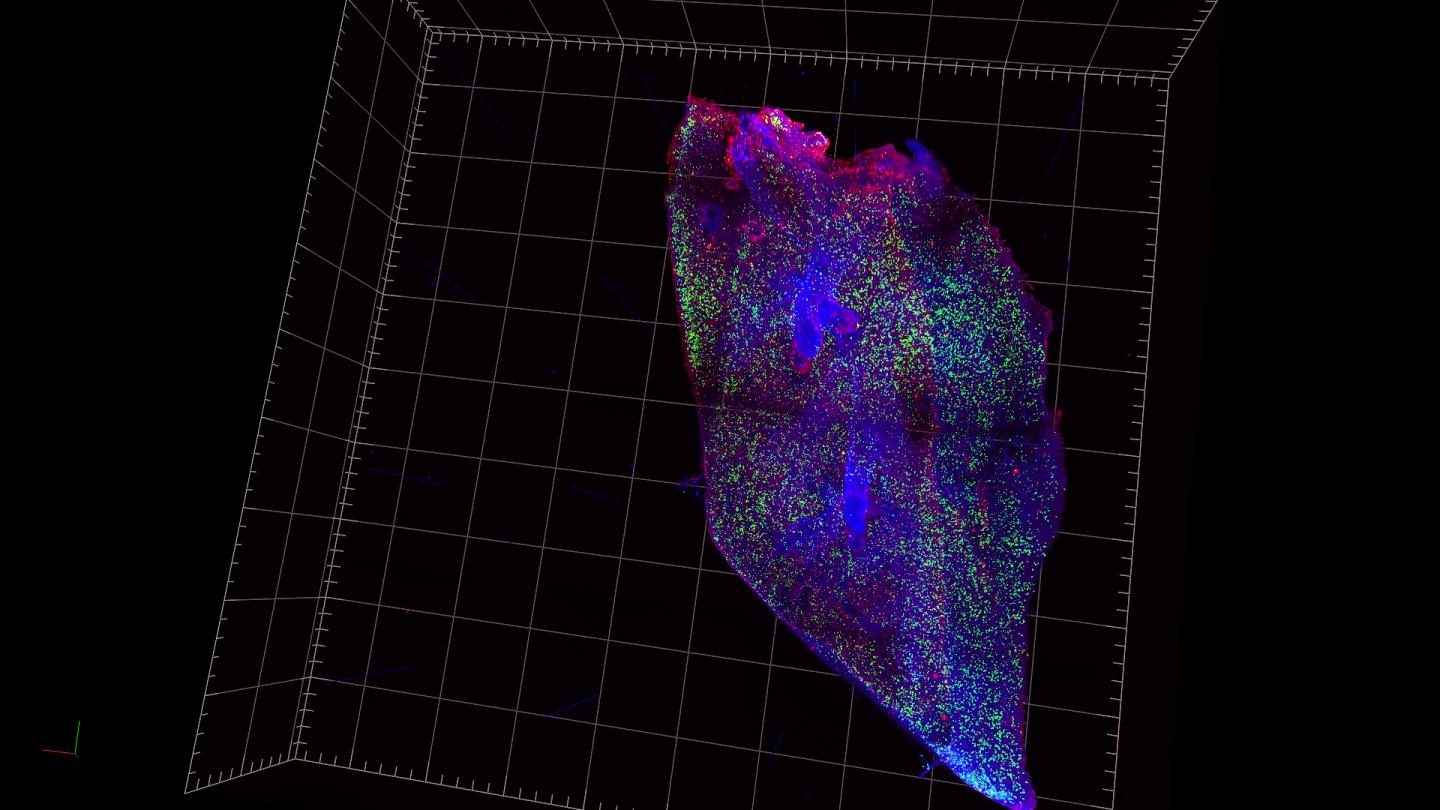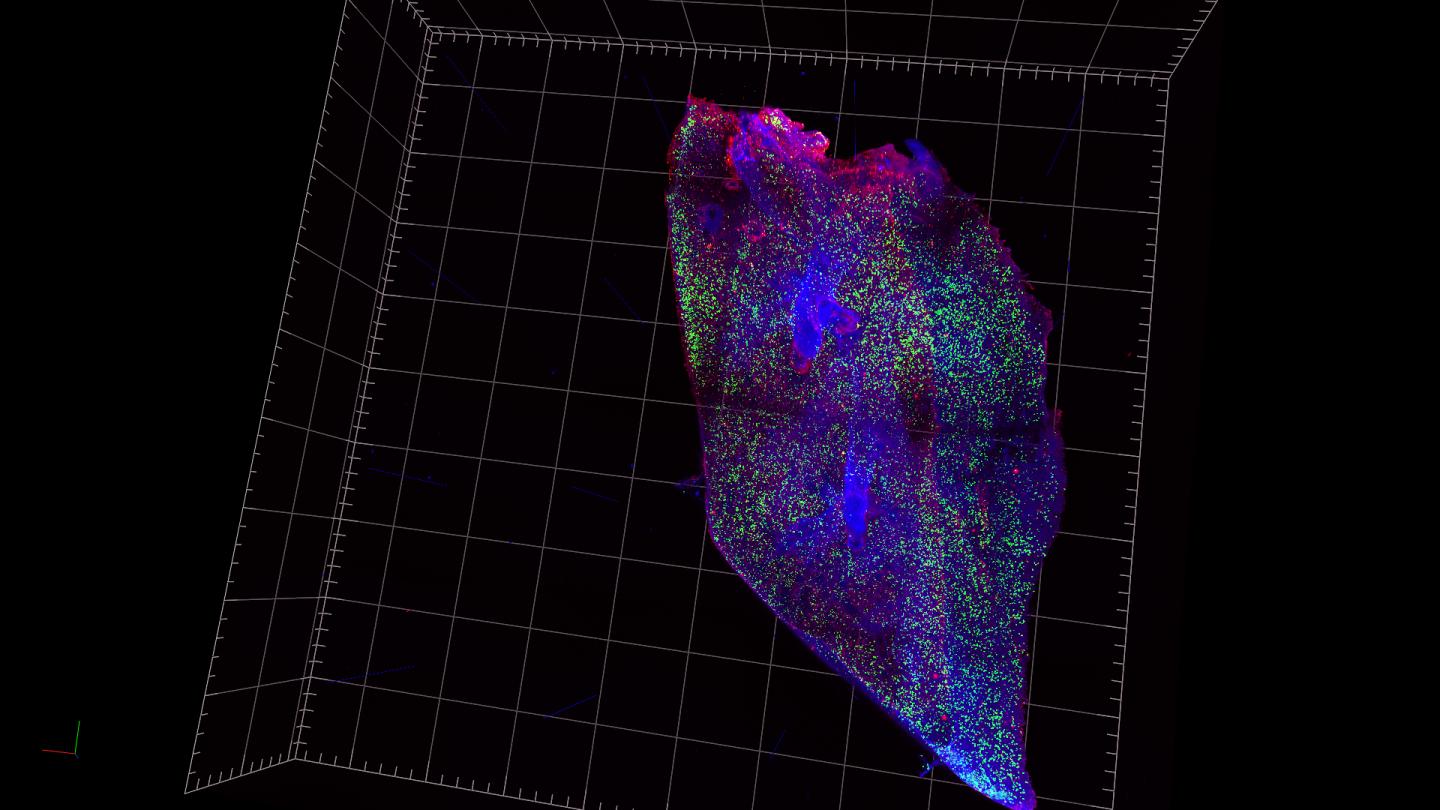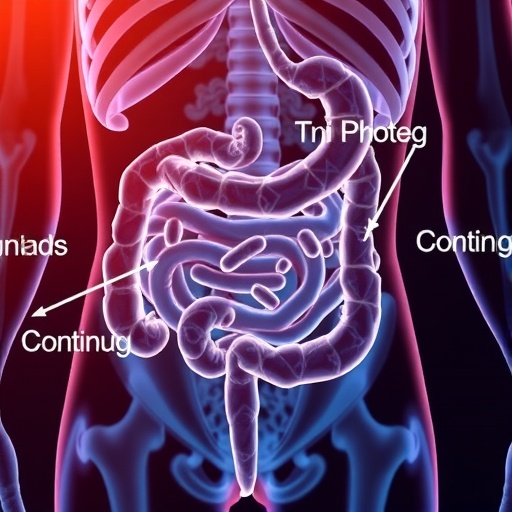
Credit: MedUni Wien/Anastasiya Hladik
(Rehovot/Vienna) Lungs are vital organs required for the uptake of oxygen in exchange for carbon dioxide. However, the enormous complexity of the respiratory organ is often underestimated and deserves a closer look: A broad range of specialized cells work closely together to ensure the proper functioning of the lung and provide the vital gas exchange. Among those cells are various immune cells, which keep invading microorganisms in check while at the same time preventing harmful inflammation.
The development and maturation of this complex organ during the embryonal stages and after birth was largely unknown. In the latest issue of Cell (DOI: 10.1016/j.cell.2018.09.009), scientists from Israel and Austria made an important contribution to the understanding of the pulmonary immune-development using a combination of high throughput single-cell RNA sequencing, functional assays and cutting-edge microscopy methods. The research group of Ido Amit from the Weizmann Institute of Science, together with the teams of Sylvia Knapp at the CeMM Research Center for Molecular Medicine of the Austrian Academy of Sciences and the Department of Medicine I of the Medical University Vienna and Tibor Harkany at the Center for Brain Research of the Medical University of Vienna could establish the first comprehensive map of lung cell types and their inter-lineage crosstalk during development.
An unexpected finding: basophils, immune cells that were hitherto held responsible for allergic reactions, reside in lungs where they develop into a special subtype that produces crucial growth factors and cytokines. These cells are different from previously described basophils that circulate in the blood, and their role in development and homeostasis, specifically in the lungs, was never reported before.
"We were able to show that the development of the lung proceeds in several waves, and that lung resident basophils are important players," Anna-Dorothea Gorki, CeMM/MedUni Vienna PhD student and co-first author of the study, explains. "Basophils broadly interact with other cell types of the lung, especially macrophages. Molecular signals, emitted by basophils, assist in the maturation of macrophages into their lung-specific phenotype, the so called alveolar macrophage."
"This discovery is very interesting, even from a medical point of view," Sylvia Knapp, Principal Investigator at CeMM and Professor at the Medical University Vienna, adds. "The unique signals of basophils and their impact on macrophages suggest they may play a role in lung diseases and might therefore expose and potential target for novel immunotherapies."
###
The study "Lung single cell signaling interaction map reveals basophil role in macrophage imprinting" was published in Cell on October 11, 2018. DOI: 10.1016/j.cell.2018.09.009
Authors: Merav Cohen, Amir Giladi, Anna-Dorothea Gorki, Dikla Gelbard Solodkin, Mor Zada, Anastasiya Hladik, Andras Miklosi, Tomer-Meir Salame, Keren Bahar Halpern, Eyal David, Shalev Itzkovitz, Tibor Harkany, Sylvia Knapp, Ido Amit.
The study was funded by the Chan Zuckerberg Initiative (CZI), a HHMI International Scholar award, the European Research Council (ERC), a MRA Established Investigator Award, the Israel Science Foundation, a Helen and Martin Kimmel award for innovative investigation, the Israeli government, Ministry of Science and Technology, the Austrian Science Fund (FWF) and the European Molecular Biology Organisation (EMBO).
Sylvia Knapp studied Medicine in Vienna and Berlin, is a board-certified Internist and obtained her PhD at the University of Amsterdam. In 2006 she joined CeMM as a Principal Investigator and until recently, she continued her clinical duties while also running her own lab. In 2012 she was appointed Professor of Infection Biology at the Medical University Vienna. She is a member of the Academia.Net circle of excellent female scientists, corresponding member of the Austrian Academy of Sciences and board member of several national and international reviewing and advisory panels.
The mission of CeMM Research Center for Molecular Medicine of the Austrian Academy of Sciences is to achieve maximum scientific innovation in molecular medicine to improve healthcare. At CeMM, an international and creative team of scientists and medical doctors pursues free-minded basic life science research in a large and vibrant hospital environment of outstanding medical tradition and practice. CeMM's research is based on post-genomic technologies and focuses on societally important diseases, such as immune disorders and infections, cancer and metabolic disorders. CeMM operates in a unique mode of super-cooperation, connecting biology with medicine, experiments with computation, discovery with translation, and science with society and the arts. The goal of CeMM is to pioneer the science that nurtures the precise, personalized, predictive and preventive medicine of the future. CeMM trains a modern blend of biomedical scientists and is located at the campus of the General Hospital and the Medical University of Vienna.
http://www.cemm.at
The Medical University of Vienna is one of the most traditional medical education establishments with nearly 7,500 students and approximately 5,500 staff members, and one of the most important top-level biomedical research institutions in Europe. Its international outlook is one of its most important pillars and the research focus is centered on immunology, cancer research, imaging, brain research and cardiovascular diseases. https://www.meduniwien.ac.at/web/en
For further information please contact
Mag. Wolfgang Däuble
Media Relations Manager
CeMM Research Center for Molecular Medicine of the Austrian Academy of Sciences
Lazarettgasse 14, AKH BT 25.3
1090 Vienna, Austria
Phone +43-1/40160-70 057
Fax +43-1/40160-970 000
[email protected]
http://www.cemm.at
Media Contact
Wolfgang Däuble
[email protected]
43-140-160-70057
@CeMM_News
http://www.cemm.oeaw.ac.at
Original Source
https://www.cell.com/cell/pdf/S0092-8674(18)31181-4.pdf http://dx.doi.org/10.1016/j.cell.2018.09.009





